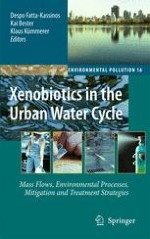2010 | OriginalPaper | Buchkapitel
14. Hydroxy Benzoate Preservatives (Parabens) in the Environment: Data for Environmental Toxicity Assessment
verfasst von : Ingrid Bazin, Aurelie Gadal, Eveline Touraud, Benoit Roig
Erschienen in: Xenobiotics in the Urban Water Cycle
Verlag: Springer Netherlands
Aktivieren Sie unsere intelligente Suche, um passende Fachinhalte oder Patente zu finden.
Wählen Sie Textabschnitte aus um mit Künstlicher Intelligenz passenden Patente zu finden. powered by
Markieren Sie Textabschnitte, um KI-gestützt weitere passende Inhalte zu finden. powered by
